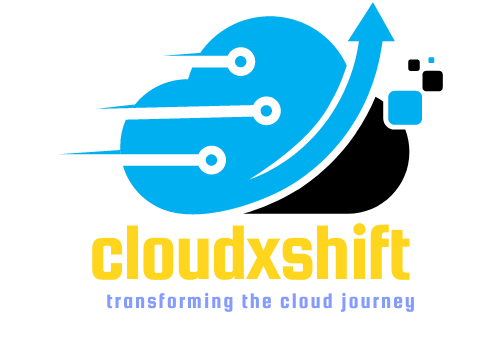
Cost managment in AWS
Introduction:
Amazon Web Services (AWS) is one of the most popular cloud service providers, offering a wide range of services to businesses of all sizes. However, as with any cloud service, the cost of using AWS can quickly add up, making it essential for businesses to manage their cloud spending efficiently. Fortunately, AWS offers several cost management tools to help businesses control their spending and optimize their use of AWS resources. In this article, we will discuss the top 5 AWS cost management tools and their benefits.
AWS Cost Explorer is a free, web-based tool that allows users to visualize and analyze their AWS spending. With Cost Explorer, users can generate reports, charts, and graphs to help them understand their usage patterns and identify opportunities for cost optimization. Some of the key benefits of AWS Cost Explorer include:
-
-
- Easy-to-use interface: AWS Cost Explorer provides a simple, user-friendly interface that makes it easy for users to navigate and generate reports.
- Customizable reports: Users can create custom reports that focus on specific cost and usage metrics, such as EC2 instance usage or S3 storage costs.
- Cost forecasting: Cost Explorer provides users with cost forecasting capabilities, which can help them plan their AWS spending more effectively.
- Integration with other AWS services: Cost Explorer integrates with other AWS services, such as AWS Budgets and AWS Trusted Advisor, to provide a more comprehensive view of AWS spending.
-
AWS Budgets is a free service that allows users to set custom cost and usage budgets for their AWS resources. With AWS Budgets, users can receive alerts when they exceed their budget limits, helping them stay within their budget and avoid unexpected AWS costs. Some of the key benefits of AWS Budgets include:
-
-
- Customizable budgets: Users can create custom budgets for specific AWS resources, such as EC2 instances or S3 storage.
- Alerts and notifications: AWS Budgets provides users with real-time alerts and notifications when they exceed their budget limits.
- Cost optimization recommendations: AWS Budgets can provide cost optimization recommendations, such as rightsizing EC2 instances or using reserved instances, to help users reduce their AWS spending.
-
-
AWS Cost and Usage Report
The AWS Cost and Usage Report is a free service that provides users with detailed information about their AWS usage and costs. With the Cost and Usage Report, users can gain insights into their AWS spending and usage patterns, helping them optimize their use of AWS resources. Some of the key benefits of AWS Cost and Usage Report include:
-
-
- Customizable reports: Users can create custom reports that focus on specific cost and usage metrics.
- Granular data: The Cost and Usage Report provides users with granular data about their AWS usage and costs, allowing them to analyze their spending at a detailed level.
- Integration with third-party tools: The Cost and Usage Report can be integrated with third-party tools, such as Excel or Tableau, for more advanced data analysis and visualization.
-
-
AWS Savings Plans
AWS Savings Plans is a flexible pricing model that allows users to save up to 72% on their AWS costs. With Savings Plans, users can commit to a specific usage rate for their AWS resources, helping them save money on their cloud spending. Some of the key benefits of AWS Savings Plans include:
-
-
- Flexibility: Savings Plans offer users flexibility in terms of commitment and usage rate, allowing them to adjust their usage as needed to save money.
- Predictable pricing: Savings Plans provide users with predictable, upfront pricing for their AWS resources, making it easier to budget for AWS spending.
-
Automatic discounts: Savings Plans offer automatic discounts on AWS usage, helping users save money without having to take any additional action.
5.AWS Trusted Advisor
AWS Trusted Advisor is a free service offered by AWS that provides users with personalized recommendations for optimizing their AWS resources and reducing their cloud costs. Trusted Advisor analyzes users’ AWS infrastructure and usage patterns to identify areas where they can improve their performance, security, and cost-efficiency.
Some of the key benefits of AWS Trusted Advisor include:
-
-
- Personalized recommendations: Trusted Advisor provides users with personalized recommendations based on their specific AWS usage and infrastructure.
- Cost optimization recommendations: Trusted Advisor provides users with cost optimization recommendations, such as identifying underutilized EC2 instances or recommending the use of reserved instances to save money.
- Security and compliance recommendations: Trusted Advisor provides users with security and compliance recommendations, such as identifying potential security vulnerabilities or ensuring compliance with regulatory requirements.
- Real-time alerts: Trusted Advisor provides users with real-time alerts when it identifies issues that require attention, allowing users to take action quickly.
-
Trusted Advisor covers five categories of best practices: Cost Optimization, Performance, Security, Fault Tolerance, and Service Limits. Each category provides actionable recommendations that can help users optimize their AWS infrastructure and reduce their cloud costs.
In summary, AWS Trusted Advisor is a valuable cost management tool for AWS users, providing personalized recommendations that can help optimize AWS usage and reduce cloud spending. With its real-time alerts and cost optimization recommendations, Trusted Advisor can help users stay within their budget and optimize their use of AWS resources.
Conclusion
In conclusion, managing costs in the cloud is a critical task for any organization that uses AWS. Fortunately, AWS provides a range of powerful cost management tools that can help users monitor their usage, optimize their infrastructure, and reduce their cloud spending.
The top five AWS cost management tools we’ve discussed in this article are AWS Cost Explorer, AWS Budgets, AWS Savings Plans, AWS Cost Anomaly Detection, and AWS Trusted Advisor. Each tool offers unique features and benefits that can help users manage their costs and optimize their use of AWS resources.
AWS Cost Explorer provides detailed insights into AWS usage and spending, helping users visualize and analyze their usage patterns and identify areas for optimization. AWS Budgets allows users to set budget targets and receive alerts when their spending exceeds those targets. AWS Savings Plans offers flexible pricing options that can help users save money on their EC2 usage. AWS Cost Anomaly Detection uses machine learning to detect unusual spending patterns and identify potential cost-saving opportunities. And AWS Trusted Advisor provides personalized recommendations that can help users optimize their AWS infrastructure and reduce their cloud costs.
By leveraging these cost management tools, AWS users can effectively monitor and manage their cloud spending, optimize their use of AWS resources, and ultimately achieve cost savings. With the right tools and strategies in place, AWS users can successfully manage their cloud costs and achieve optimal cost efficiency.





